There have been several developments in the SEO landscape over the past 5 years. A lot of the prominent trends of last year will continue and grow in 2021 and beyond.
The popular saying that “content is King” which was first introduced by Bill Gates has equally evolved. Produce as much content as you can, and watch your organic traffic grow each passing day.
This used to be the approach but when the evolution began, another term that takes care of both high-quality content and distribution emerged — content marketing.
Even though the end goal of search engine optimization is to rank high in search engine results pages (SERPs), how we go about it has changed. For example, if you target a particular keyword in your title but fails to address the “intent” behind such a keyword, you will still struggle to get organic visibility.
More so, if your domain name (i.e., website) isn’t an authority in the field, you will still struggle to get any worthwhile results from your SEO efforts. Today, useful content as far as users and search engines are concerned is that type that answers questions, is easy to read, and quite easy to implement.
As any algorithm update by Google often keeps website owners on their toes, lots of other trends are expected to take shape both now and later.
Here are the popular trends of 2020 that will leapfrog into 2021:
1). Keyword Research Is Critical To The Success of a Campaign
Companies that relied on traditional media such as Radio, TV, Billboards and Magazine advertisements are getting good results from organic searches. How?
By simply creating useful content and getting the word out.
As a result, millions of B2B and B2C brands are looking at SEO as a tool to reach even more people. And they are willing to invest in it. According to MediaPost, “companies will spend $72 billion on SEO.
So how do keywords research come into play here? Knowing the keywords that your target audience is using to find you in the search engines is important. Here are a few striking benefits:
i). Keyword research serves as a compass: In other words, it directs you on the exact needs of your target audience, what they care about, and how they want to be served. So beyond the keywords you generate with your keyword suggestion tool, you also gain insights on the “searcher intent” or the purpose behind the query.
Once you understand the searcher intent, you can produce a useful, rich, and actionable content that your audience want. And it doesn’t matter the type of content format (e.g., an article, a blog post, an infographic, a video, meme, a podcast, a short report), making it easily digestible is key. Hence, you need a proper grasp of the query behind the intent.
ii). Using the right keywords can increase conversions: The right keywords will definitely drive the right traffic and conversions to your website. Though you have to create high-value content that will help users.

If your company invests $100,000 into SEO, for example, you can’t afford to create content blindly; without targeting keywords that people are interested in. Would you?
Don’t ignore keywords research, and always optimize your content properly for the right intent.
“Keyword Intent” is basically the underlying “purpose” behind a given keyword. For example, can you say the “purpose” behind this keyword “best garden gloves”?
- Is the searcher looking to buy a garden glove?
- Or is the searcher a college student who wants to learn more about gardening gloves?
Note: It’s quite difficult to know the exact intent/purpose behind a head keyword (e.g., casual shoes) but when it’s long-tail keyword (such as “buy adidas yeezy 350”), you know exactly the searcher is looking to buy the yeezy shoes.
Though a lot has changed on how search engines interpret keywords using natural language search, keywords are still important because it guides search bots; they tell the search engines what pages to rank that are relevant to what the searcher wants.
How the keywords are placed in the content, the position, and how natural they fit into the overall content are important factors that search engines (especially Google) looks out for.
And considering how difficult it is to rank “head keywords” such as “digital cameras” the best approach is to focus on long-tail variations of the head keywords. So, optimizing your page “best digital cameras under $300”, for example, will help you to rank quicker in Google — provided your content is useful, comprehensive, and easy to read.
What about the competition?
To a large extent, where a particular keyword (with focus on intent) ranked in Google search engine results pages equally depends on the competition level.
Generally, head keywords have high search volumes which increase the competition; as many websites and businesses target them. More so, the major keywords research tools are designed to easily showcase these head keywords. You need a little digging to find long-tail keywords or a tool designated for that.
You can use this 3-step process to select the right keywords for a successful campaign:
- Use the right tool: Google Keywords Planner may not give you the right keywords (especially the long-tail variants). You should try KeywordTool.io, Semrush, and the likes. These tools will give you low competition keywords with decent search volumes.
- Refine your keyword list: Generating a list of keywords with your favorite tool still doesn’t mean anything. Because they are just suggestions. Hence, you need to filter the list and select keywords with commercial intent, and avoid keywords that have no search volume.
- Check the competition manually: This is my favorite aspect of picking a viable keyword that will guarantee a successful campaign. You can know the number of websites or web pages targeting the same keyword when you enter it into Google enclosed in double quotes (e.g., “social media tools for business”)
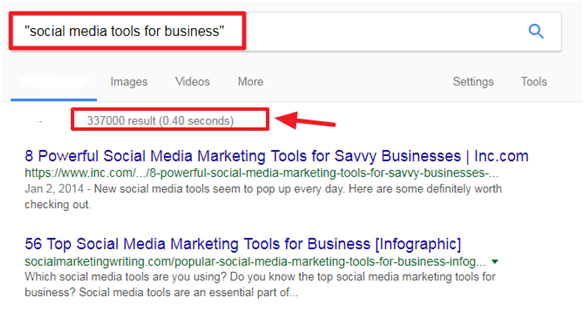
As you can see, the keyword “social media tools for business” has 337k web pages targeting it. If you search for the keyword without the double quotes, you will be amazed because the competition will look big, when in reality it’s actually smaller.

That’s 218 million web pages targeting the keywords when you search without double quotes.
Essentially, when checking for competition, use double quotes so you get accurate level of competition.
2). User Engagement Metrics are Important
With over 200 Google Ranking Factors, user engagement metrics can be said to be the determining factor that controls other factors. Why? Because these are the only factors that tell Google how useful your content is, and how satisfied or dissatisfied searchers are when they come to your website.
A research conducted by WordStream in 2016 found that for a machine learning-based algorithm such as RankBrain, CTR, which is an engagement metric is one of the interpretations for understandings today’s ranking system.

You have to prove to Google that your content deserves to rank #1. Though your website might be well-designed and attractive, how are people reacting to your content?
That’s where the challenge lies.
The user engagement metrics may seem like vanity metrics especially for SaaS companies that sell subscription-based services. Because what SaaS businesses care about is the number of new users that signed up, how many customers renewed their plan, and the Customer Lifetime Value (CLV).
But since Google can’t tell whether or not search users who visited your website purchased a product or not, the user metrics are used for measuring how useful your content is.
Here are some of the user engagement metrics:
i). Time spent on site: This is popularly called “Dwell Time” and it’s the average time a user spends on a particular page. Although Google hasn’t provided insights and data on how dwell time affects search rankings, but given that user behavior is responsible for driving search rankings, it tells us that dwell time is important.
If you use Google Analytics, you will be able to see the average dwell time on your pages.

There are no fast rules to what the perfect dwell time should be, but anything below 30 seconds is bad, given that it takes approximately 7 minutes to read a 1,000-word blog post, according to an analysis by Medium. Of course, the read-time increases with respect to the length of the post.
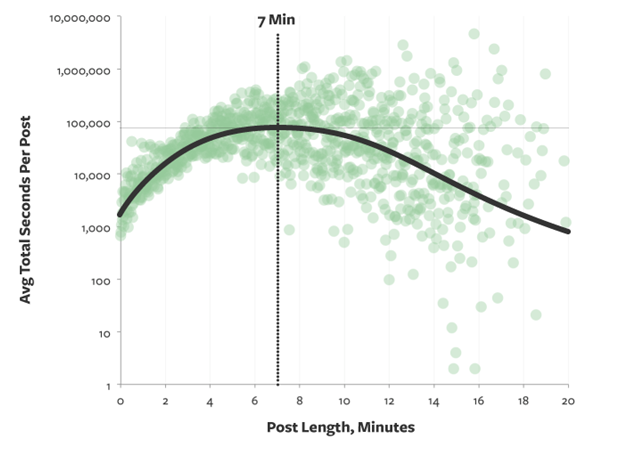
When analyzing the impact of their content, Medium doesn’t look at mere clicks from search engines or social media, they look at attention and how much time users spent to read the post.
If you want to increase the average time people spend on your website, you might want to consider your traffic source and the geographic location, as well as the demographics for most of your traffic. Ideally, you should aim to increase traffic from the U.S. and U.K., since both countries spend the highest time on websites.

ii). Pageviews: Google defined pageview as an instance of a page being loaded (or reloaded) in Google. This shows the number of pages a searcher viewed.

Tell me, when you land on a website and after reading the content you were happy, would you consider checking out other content as well?
Chances are, you will.
As an example, each time I visit Copyblogger, I like to read 2 – 3 new posts before I leave. It’s not because I have all the time in the world, far from it. The truth is, their content makes me a better writer and marketer.
To Google, pageviews reveal how useful your web pages are. Of course, Google will reward you for the searchers who viewed only one page — but you will get better results if the same searchers check out your about page or read your latest post.
iii). Traffic from search engines: Google uses organic traffic to your website to measure how much activity takes place on your website. Traffic is a user engagement metric, especially when it’s a human and not a bot.
Traffic being a user-based metric leads to interaction on your website. This is opposed to static features such as title tag, meta description, and URL.
Dan Petrovic shared a case study on the Moz’s blog and revealed how Google can use these interactive user metrics to rank web pages while still focusing on the user intent, even as search engines get sophisticated as the days go by.
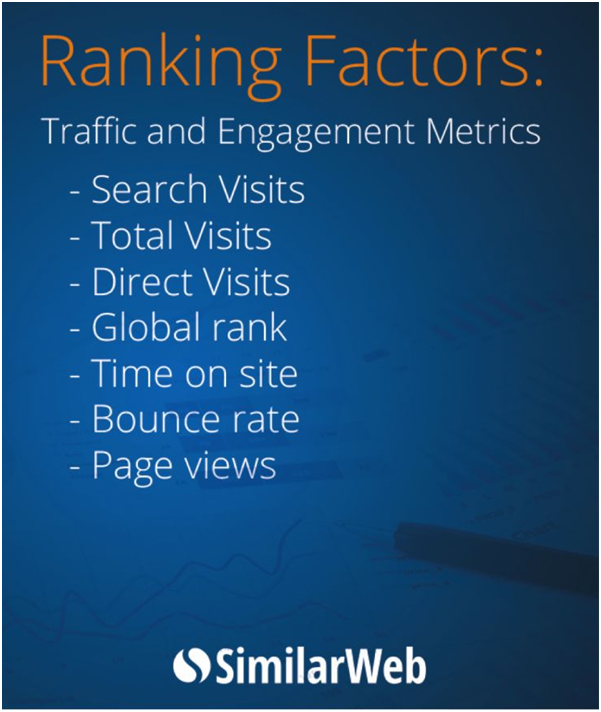
If you look at these user engagement metrics closely, you can see that “traffic” is where it all begins. Because without traffic (search visits), there will be no time on site (dwell time), bounce rate, and the like.
As an important user engagement metric, most SEO professionals and website owners look for shortcuts and other means of manipulating search rankings. At the end of the day, they fall prey to Google’s penalty and regret the awful steps they had taken.
Going forward in 2021, the best way to get traffic is still the same old-school approach: deliver value.
Here’s a graph from HubSpot: It shows that the more value you provide, the more of it you’ll get.
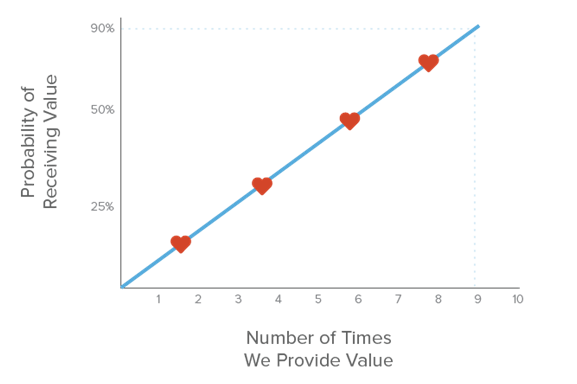
iv). Bounce rate: Are you familiar with bounce rates? Well, bounce rate a single-page session of your website. In other words, when users open a page on your website and exits without visiting another page or triggering any request to the Analytics server at that particular time.
Bounce rate can be triggered when a user:
- Follows an outbound link (i.e., a link that goes out of the domain)
- Enters a new website URL in the browser’s address bar
- Stays inactive for up to 1 minute and eventually timing out the current session
- Closes the browser and leaves
- Immediately goes back to search results to get a better information
- And so on.
Every website is expected to drive engagement. Google can tell whether or not users are enjoying your content if they take micro-actions like clicking your menu pages, scrolling down, opening your “Popular Post” or engaging with your quiz, poll, or embed survey.
No, the searcher doesn’t need to visit another page altogether, even the activities on the page they are in counts.
Is a high bounce rate bad?
Not really. Because different consumers have a way they consume content on different pages. In Google Analytics, you should check the pages with the highest bounce rate and ask yourself why.
Here’s the bounce rate by industry chart, according to website type:
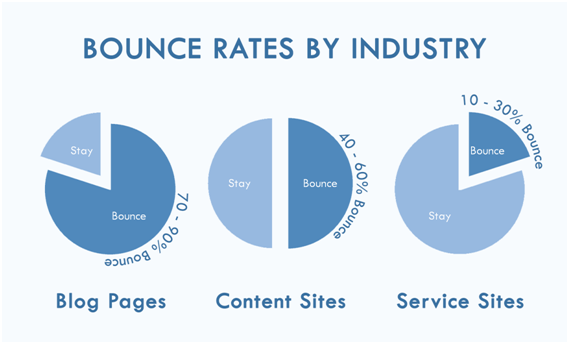
No matter what type of website you have, you can improve (i.e., reduce) bounce rate by making it easier for users to trigger more requests. You should add interactivity to your pages like a survey, a poll, or quiz. Just get users involved and they will stay for longer.
And the longer they stay on your page, the more requests they will send to the Analytics server during that session. This, in turn, can increase your website traffic.
New England Biolabs, a biotech company focused on improving the customer experience on their website. As a result, they saw traffic increase by 74%, bounce rate went down by 7.5%, and page visits grew by 13%.
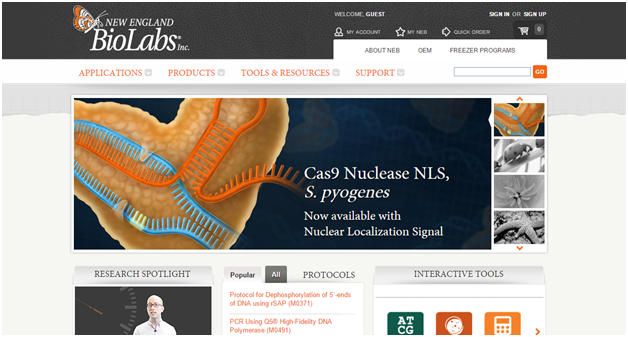
All of these results were possible because the company put the spotlight on the user. They were not just creating content just to fill the pages, but to help their customers. You should do that as well.
How to increase user engagement metrics
The essence of a website is to provide value for visitors and get them excited to stick around. Because by sticking around for longer, they can check out the offer and become loyal customers.
User engagement metrics such as time on page, returning visitor percentage (i.e., the repeat visitors), pages per visit, frequency of visits, among many others can be improved — when you pay attention to the value your content offers and how you format it.
Let’s consider a few proven ways to increase these user engagement metrics:
i). Use short and persuasive sentences and paragraphs: Make sure your sentences are short. When you’re writing a blog post, for example, each sentence should convey a message, and your shorter paragraphs will help users feel they’re getting the most out of your content. Shorter sentences will causes visitors to read more of your content, to scroll down further, and possibly read your previous posts. This increases time on page, and bounce rate is lowered as well.
David Stelzner uses the short sentence method on his blog, and he’s distilled the same rule to authors who contribute content on his blog.
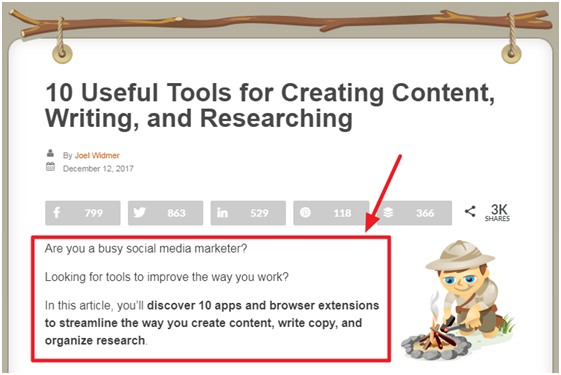
ii). Place attractive image above the fold: This is very important. A thick wall of text at the beginning of your content is boring, no matter how much value it contains.
Since the human attention span is relatively low, you need to draw visitors into your content with a colorful and attractive image at the top of your article — right above the fold.

This will dramatically reduce your bounce rate (an important user engagement metric) and boost visitor’s dwell time on your page. In turn, this will encourage visitors to read the rest of your content, and even share it, according to a study by Xerox.
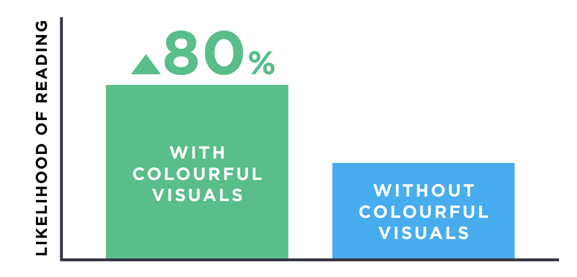
iii). Use bullets and sub-headings to enhance content structure: In addition to crafting short sentences and paragraphs, you should use bullets to break up your content and make it easy to read and scan. Visitors will love it. Use <h2 or <h3> for subheadings so they stand out from the rest of the text.
iv). Include bucket brigades into your posts: Don’t get confused. Bucket Brigades are basically words, terms, and phrases used in creative writing to build excitement in people and prevent them from hitting their “back” button, especially when they come from search engine results.
Here’s a good example from a blog post:
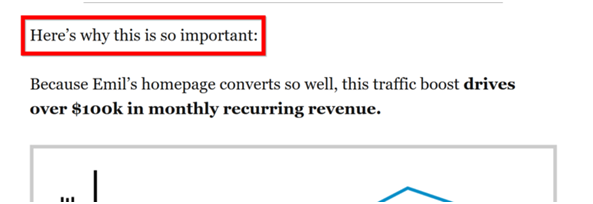
Ideally, you should include a bucket brigade at the beginning and middle of your content. This will hook readers and quietly nudge them into the rest of the content.
v). Put the main information front and center: Search engine users want to get results FAST. If you don’t want them to bounce, then make sure your main content with the information the searcher wants is well positioned.
Place the main information at the front and center — it’s a great way to get people to stick around. Here’s an example from HubSpot:

3). Producing a variety of content will sustain your rankings
When Content Marketing Institute released their 2016 B2C Content Marketing Trends—North America, one of the striking information that surprised a lot of people is the need for a variety of content. Sadly, 39% of B2C businesses struggle to produce videos, infographics, blog posts, PDF reports, and different types of content.
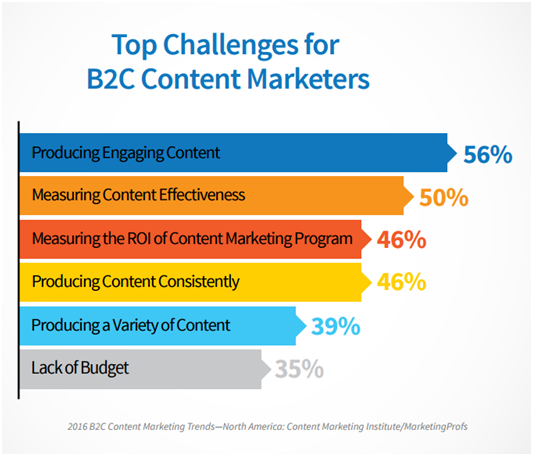
Worse, 56% of businesses don’t know how to produce engaging content. In 2017, bloggers, website owners, ecommerce marketers, and content marketers saw the shift on how customers consume content.
The majority of consumers out there don’t have time to read a long post. So they wound up closing their browsers or timing out the session while on a page.
As a business, don’t just focus on keywords alone, remember that content marketing is the new form of search engine optimization.
In order to sustain your rankings this year and in the years to come, you should produce content in other forms, such as videos, podcasts, long-form guides (like the one you’re reading), interactive content, infographics, Slide presentations, and interactive content (e.g., quiz, polls, calculators)
4). Voice Search Is Becoming the Next Big Thing
Early this year, Rand Fishkin of Moz predicted that “voice search will be over 25% of all Google searches in the US within 12 months.”

Well, I think it’s already happening. Voice search has become one of the available search options. The advantage is undeniable. It’s fast, reliable, and hands-free.
As each update improves technology, the error rate of voice search declines. According to Google’s Director of Conversational Search, Behshad Behzadi, in his speech at SMX West 2016:
“The speech recognition error rate has reduced from around 25% from the past years to just 8% today.”
Now, the primary goal of voice search in 2017 is to go beyond and above voice recognition and metamorphous into voice understanding. This involves lots of changes with respect to:
- Personalized information
- Previous searches
- Context based on frequently used apps
- Location-based context
- Keyword research based on spoken queries
Voice search is undoubtedly one of the most significant trends of the digital age.
With significant improvements to Google Now, Cortana, and Siri, search engine optimization experts would be smart to carefully observe voice invention and think beyond the typical text-based queries in 2021.
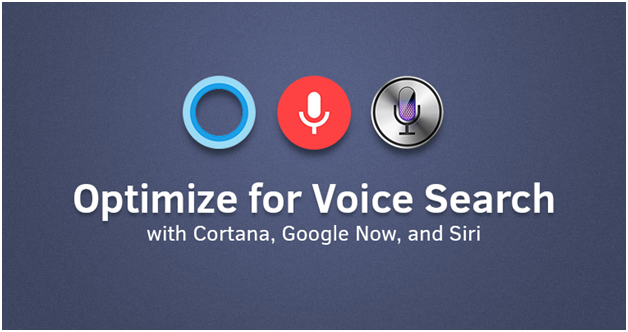
Here’s how you can optimize for voice search:
i). Answer specific questions: If you have ever conducted a voice search on a mobile device, it’s obvious that you’re interested in a very specific piece of information. Maybe you want to know the name of a movie character, the address of your favorite restaurant when you’re in a new city, the price of a specific product, among many others.
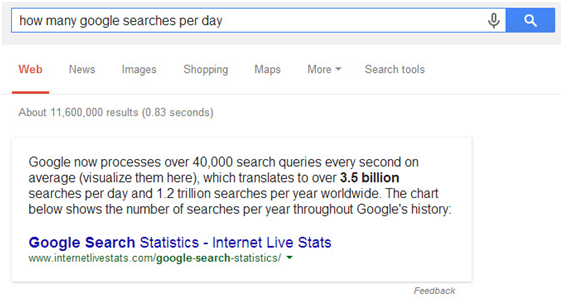
In the same vein, people who use voice search are laser-targeting specific information. So bear that in mind when creating content. As much as possible, always your content with a definition or a quick answer to a term, phrase, concept, or theory.
If your business is location-based (i.e., consumers are expected to visit your office or shop before they can do business with you), then ensure your address is clear and bold on your website; as this can provide a quick answer when people are asking for your address.
ii). Optimize local listings: There’s no denying the fact that voice search users are mostly looking for specific information. Interestingly, the usually speak “long-tail keywords” into the Google search box, for example, “find burger spot in Houston.”
If that’s the case, then you’ll get better results if you optimize your pages for the search term “burger spots in Houston.”
Since voice search can recognize and interpret search terms that have “near me” effectively, it means that it can refer to mobile user’s physical address to generate the right results. The search bot will likely get results from Google My Business listings.
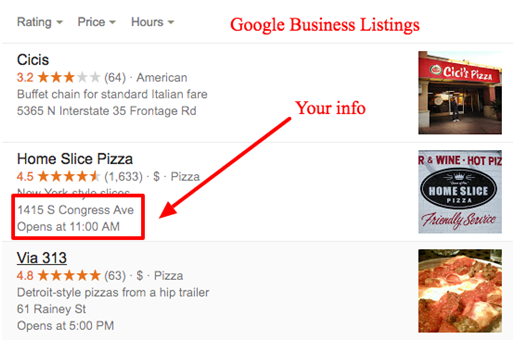
Essentially, what you should do is claim your business on Google Business Listings, update your information, add your business information to the appropriate category, and provide enough information that will help your website to show up in a voice search.
iii). Optimize your pages with natural phrases: In other words, use terms and phrases that people use every day to communicate. Because, when we use voice search, we tend to go into detail as though we’re talking to a real person at the other end.
You can use Answer The Public, a powerful tool that appends with common modifiers like “who”, “with”, “when”, or “for” to help you understand the searcher’s intent better.
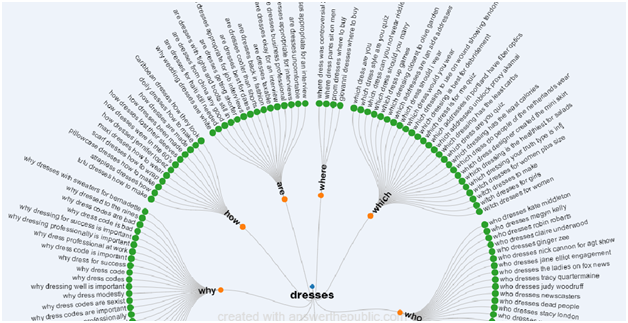
Pro Tip: When it comes to voice search optimization, the goal is to use the proven practices that will not help you reach more people, regardless of their mobile device. The method you adopt for each device will vary. For example, Google considers Answer Boxes when giving voice search results. But when you ask questions using Amazon Echo/Alexa (e.g., best breakfast restaurant in LA), the voice search results will be closely-tied to the zip codes. So don’t hide any information on your website, especially your address, zip code, phone numbers, nearest bus stop, etc. Make it bold and clear on your page. It will help Google to push your website to the top of voice search organic results listings page.
5). Focus on Mobile Users
Here’s an interesting little tidbit that evolves every time. We already know the dominant share of internet usage has recently moved to mobile devices leaving desktop behind. According to SmartInsights, 71% of U.S. internet use happened on mobile.
Aside from optimizing your web pages for desktop users, remember that your customers are mobile and want a mobile experience. Here are proven ways to get optimal results from focusing on mobile users;
- Ensure that your website is mobile responsive
- Create content that’s well-formatted for search users.
- Use bullets and subheads to break up large chunks of text.
Pro Tip: Mobile users’ search behavior is quite different as compared to users on desktop. Mobile users usually ask specific questions because they want a quick answer.
For example, when mobile users are looking to buy a digital camera, the majority of them will search for a specific brand and model, probably because they have come across it before, read about it, or have a knowledge about it either online or in some offline ads. In a nutshell, focus on creating content that answers specific questions for your users.
6). User Experience Now Matters a Lot
No matter what product you’re selling, or what services you’re offering, every business should focus on the user experience. After all, in the end, it’s always people you’re selling to and not search engine bots.
Now, Google has placed more emphasis on the overall user experience as well.
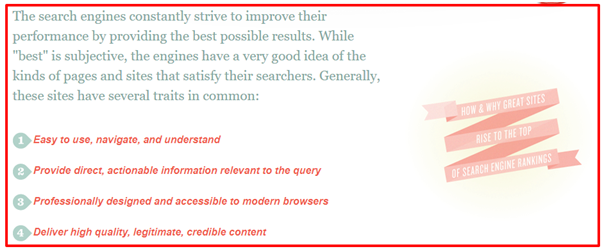
With user experience being the norm right now when improving or designing your website, you need to consider some elementary but impactful design elements such as:
- Creating buyer personas that would help you meet customer’s needs effectively.
- Creating high-quality and helpful content that actually solve real problems.
Pro Tip: User experience is an integral part of search engine optimization, as it impacts search rankings. If users frequently leave or abandon your website due to slow loading pages, poor functionality, or bad design, this will send a negative signal that your website isn’t useful (trust me, that’s what Google will assume). On the other hand, if your website loads up quickly, it’s easy to navigate, and users are motivated to stay longer and become more engaged, it will boost your search rankings in the long run and give you sustainable organic traffic.
7). Google Will Remain The Top Referrer Of Website Traffic
In his 2017 SEO predictions, Rand Fishkin also stated that “Google will remain the number one referrer of website traffic — not even Facebook, or any other source, will pass it.”
Below is the breakdown from SimilarWeb showing which channels send traffic on the internet between Jan. 2016 – Dec. 2016:

Generally, I’d ignore “direct traffic” here as those include HTTP and HTTPS referrals that offers little or no referral string, bookmarks, links from applications that don’t carry referrals, each opening of every browser and browser tabs, etc.
The data below is where I often pay attention.
“Google is 11 times bigger than Facebook, while Facebook is 1.5 times the size of YouTube.”
Rand predicts that Google will always dominate, no matter the predictions that Amazon, Facebook, Snapchat or Quora, would eventually surpass it.
That being said, let’s dive into competitor analysis and see how we can use data from competitors to improve our search traffic and rankings.
Introduction
SEO Strategy